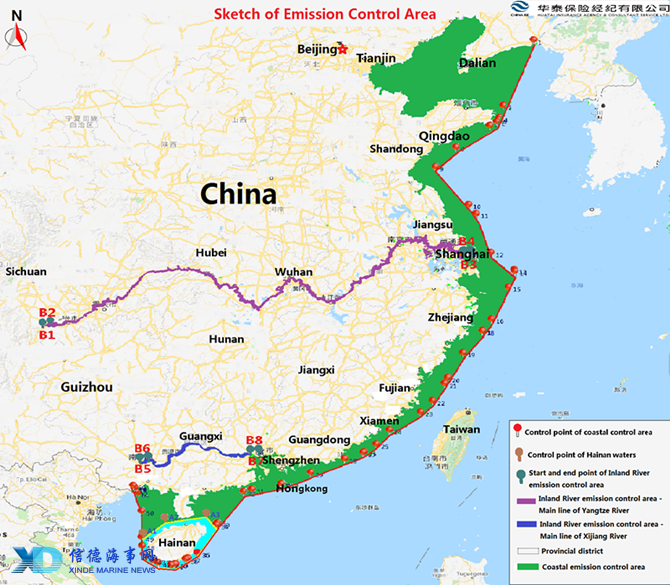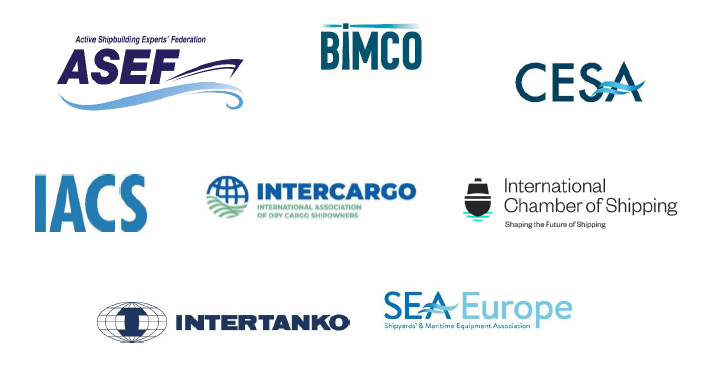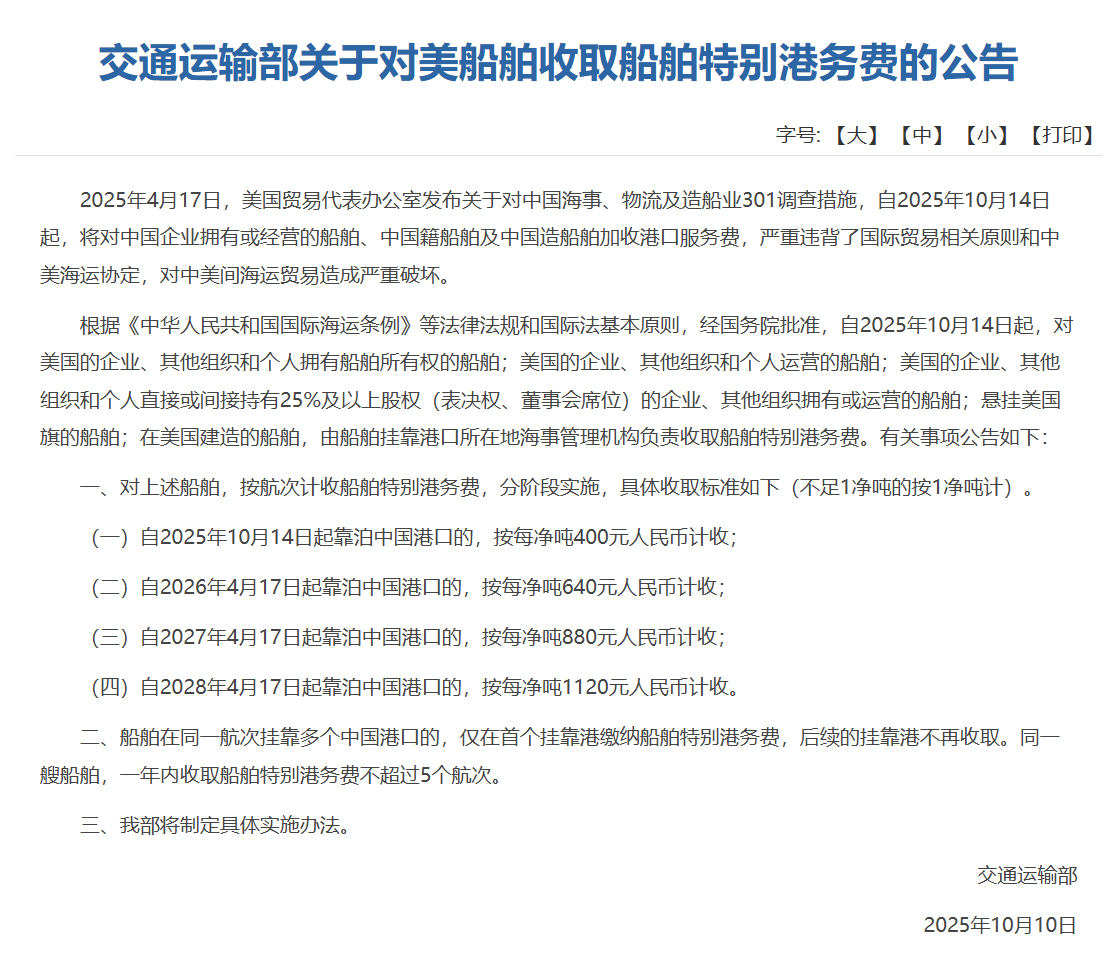Chinese Ministry of Transport issued a new regulation regarding requirements of emission control areas in Chinese territorial waters which will become effective from 01.01.2019. This new regulation introduces some substantial changes to the existing ECA scheme previously announced by Chinese authorities. To help ship owners and operators understand and comply with the new regulation, we have prepared this circular to introduce the main contents of the updated requirements.
Applicable objects
This regulation applies to all the vessels which are sailing, anchoring or working in emission control areas.
The emission control areas
Emission control areas under this regulation include coastal emission control area and inner river emission control area.
Coastal emission control area (hereinafter referred to as coastal ECA) refers to sea areas within sea boundary line connected by 60 points as illustrated in Table 1. Hainan costal ECA refers to sea areas within sea boundary line connected by 20 points shown in Table 2.
Inland River emission control area (hereinafter referred to as Inland Water ECA) includes navigable inland waters administered by Yangtze River main line (from Shuifu County of Yunnan province to Liuyang estuary of Jiangsu province) and Xijiang River main line (from Nanning of Guangxi province to Zhaoqing of Guangdong province), whose starting and ending coordinates are showed in Table 3.
Table 1 Coordinates of control points of sea boundary line in coastal ECA

Table 2 Coordinates of control points of sea boundary line in Hainan coastal ECA

Table 3 Coordinates of starting and ending points in Inland Water ECA
| Inner River Control Areas | Boundary | Point Name | Detail of Point | No. | Longitude | Latitude |
| Yangtzi River main line | Starting Point | Shuifu, Yunnan | Xiangjiaba Bridge | B1 | 104。24'30. 60" | 28。38'22. 38" |
| B2 | 104。24'35. 94" | 28。38'27. 84" | ||||
| Ending Point | Liuhekou, Jiangsu | Line from Liuheiwu located in downsteam of Liuhekou to Shixingan located in downstream of Shiqiao River at Chongming Island | B3 | 121。18'54. 00" | 31。30'52. 00" | |
| B4 | 121。22'30. 00" | 31。37'34. 00" | ||||
| Xijiang River main line | Starting Point | Nanning, Guangxi | Minsheng Terminal in Nanning | B5 | 108。18'19. 77" | 22。48'48. 60" |
| B6 | 108。18'26. 72" | 22。48'39. 76" | ||||
| Ending Point | Zhaoqing, Guangdong | Connection line between Jinlixia tiexian corner in Xijiang river and top of Wudinggang Chung Hau | B7 | 112。48'30. 00" | 23。08'45. 00" | |
| B8 | 112。47'19. 00" |
23。08'01. 00" |


Emission Control Requirements
(1) Oxysulfide and PM emission control requirements
1. From 01.01.2019, ocean-going vessels are required to use fuel with low sulphur content not exceeding 0.5%m/m when entering into emission control areas. Large inland vessels and river-coastal vessels shall use fuel oil that meets newly revised GB standard. Other inland vessels are required to use diesel oil that meets relevant standard. From 01.01.2020, ocean-going vessels are required to use low sulphur content fuel not exceeding 0.1%m/m when entering Inland Water ECA.
2. From 01.03.2020, vessels without taking alternative measures, such as installing PM and oxysulfide control device are only permitted to carry and use fuel oil specified in this regulation when entering into emission control areas.
3. From 01.01.2022, ocean-going vessel are required to use low sulphur content fuel not exceeding 0.1%m/m when entering Hainan costal ECA.
4. Chinese authority will evaluate the feasibility of using low sulphur content fuel no more than 0.1%m/m at an appropriate time and decide whether or not to require ocean-going vessel to use fuel with sulphur content not exceeding 0.1%m/m when entering coastal ECA from 01.01.2025.
(2) Oxynitride emission control requirements
5. For international navigating vessels built on/after 01.01.2000 (subject to the date of laying keel, hereinafter the same) or undergone major modification of a marine diesel engine, if the output power of a single marine diesel engine exceeds 130 kW, the vessel shall meet the Tier I oxynitride emission limits stipulated by MARPOL.
6. For international navigating vessels built on/after 01.01.2011 or undergone major modification of a marine diesel engine, if the output power of a single marine diesel engine exceeds 130 kW, the vessel shall meet the Tier II oxynitride emission limits stipulated by MARPOL.
7. For Chinese domestic navigating vessels built on/after 01.01.2015 or undergone major modification of a marine diesel engine, if the output power of a single marine diesel engine exceeds 130 kW, the vessel shall meet the Tier II oxynitride emission limits stipulated by MARPOL.
8. For Chinese domestic navigating vessels built on/after 01.01.2015 or undergone major modification of a marine diesel engine, who sailed into the Hainan coastal ECA and Inland Water ECA, the vessel’s marine diesel engine with single cylinder displacement no less than 30 liters shall meet the Tier III oxynitride emission limits stipulated by MARPOL.
9. Chinese authority will evaluate the feasibility of implementing Tier III oxynitride emission limits stipulated by MARPOL, in order to decide whether the marine diesel engine with single cylinder displacement no less than 30 liters, which equipped on Chinese domestic navigated vessels built on/after 01.01.2015 or undergone major modification of a marine diesel engine, shall meet the Tier III oxynitride emission limits stipulated by MARPOL.
(3) Requirements of using shore power by vessel in port
10. The Chinese public service vessels, inland river vessels (with exception of liquid cargo vessel) and river-coastal vessels build on/after 01.01.2019 shall be equipped with ship shore power system ship-borne device. The Chinese domestic coastal container ships, cruises, ro-ro passenger ships, passenger ships with a gross tonnage at least 3,000 tons and dry bulk cargo ships with a gross tonnage at least 50,000 tons build on/after 01.01.2020 shall be equipped with ship shore power system ship-borne device.
11. From 01.07.2019, shore power shall be used if vessels equipped with shore power system ship-borne device (with the exception of liquid cargo vessel) at berth with onshore power supply capacity for more than 3 hours in the Coastal ECA, or get alongside berth with onshore power supply capacity in the Inland Water ECA for more than 2 hours and without using other equivalent alternative measures (including the use of clean energy, new energy, ship-borne electrical storage device or closing the auxiliary engine, etc., hereinafter the same). From 01.01.2021, shore power shall be used if a cruise gets alongside berth with onshore power supply capacity for more than 3 hours and without using other equivalent alternative measures in the ECAs.
12. From 01.01.2022, Chinese public service vessels, inland river vessels (with the exception of liquid cargo vessel) using single marine diesel engine power output of more than 130 KW but do not meet the Tier II oxynitride emission limits stipulated by MARPOL, and the Chinese domestic coastal container ships, ro-ro passenger ships, passenger ships with a gross tonnage of at least 3,000 tons and dry bulk cargo ships with gross tonnage of at least 50,000 tons are required to install shore power system ship-borne device. Shore power shall be used if vessels get alongside berth with onshore power supply capacity for more than 3 hours in the Coastal ECA, or berthing at port with onshore power supply capacity for more than 2 hours in the Inland Water ECA, without using other equivalent alternative measures.
13. Chinese shipping enterprises and operators are encouraged to install shore power system ship-borne device on vessels other than those specified in article 12, and to use shore power when getting alongside berth with onshore power supply capacity in the emission control area.
(4) Others
14. Vessels may take alternative measures, such as using clean energy/new energy, equipping with power storage device, exhaust gas cleaning system etc. to satisfy the emission control requirements. If the vessel using exhaust gas after-treatment method, the emission-monitoring device shall be installed, and the generated wastewater waste liquid shall be disposed according to relevant regulations.
15. The local governments of other inland water area are encouraged to adopt the requirement of the Inland Water ECA and lodge request to ocean-going vessels to use low sulphur content fuel when entering into local waters.
16. Domestic oil tankers with no less than 150 tons and build on/after 01.01.2020 are required to have oil and gas recovery condition when entering into ECAs and encouraged to conduct oil and gas recovery if safety requirement can be satisfied. Foreign-going vessels shall comply with the emission control requirements for volatile organic stipulated by MARPOL.
17. Vessels should strictly implement other existing international conventions, domestic laws and regulations on emission control requirements for atmospheric pollutants.
Given the above, owners are reminded to ensure satisfaction of relevant requirements mentioned in the regulation above when your good vessels enter into Chinese territorial waters as from 01.01.2019 to avoid any penalty or problems.
Source:HUATAI INSURANCE AGENCY
Please Contact Us at:






